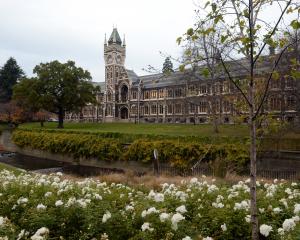
Yes, it probably was a suggestion too far when I recommended lots of junk playgrounds for Dunedin where kids could play with fire as well as build pallet huts.
I got carried away channelling my own fabulous childhood fire-play on the outskirts of Balclutha, long before helicopter parenting and health and safety surveillance.
And yes, many conscientious parents will welcome a rates-paid "destination playground", as somewhere safe but cheaper than Chipmunks where they can take the kids for a few hours, especially if they don’t know that the model $3million Margaret Mahy playground in Christchurch cost near $40million once the land, access, and other issues were paid for.
A "destination playground" as currently promoted is a consultant’s dream with the inevitable big budgets, and a politician’s dream vanity project promising a central city attraction for voting-age parents of kids — who would mostly prefer local everyday adventure-play areas.
Even voting-age students would likely prefer a patch of Logan Park with a supply of eco-friendly pallets for their bonfires instead of poisonous couches. Who but risk-fearing parents really want a free but expensive pristine rubberised playground with all the latest health and safety fairground attractions?
As well as the expense, I am also concerned that a destination playground will become another feel-good diversion from the DCC’s real issues: the billion-dollar group debt, the fourth year of still no dividends from council-controlled companies, insufficient drainage maintenance, increasing housing compliance costs and increasing interest rates.
For much less cost than the proposed destination playground the DCC could provide a range of rough play areas in all our suburbs, known internationally as "junk playgrounds" or "adventure playgrounds", for our kids to learn and play every day.
The DCC already owns many parcels of marginal land around the city, and any number of decent pallets and tyres are available free for the taking from local businesses. These facts alone will probably make our bureaucracies want to sink the adventure playground idea, as there are no exciting big budgets involved.
Still hopeful and channelling my inner child, I have suggested something like "The Land" type of playground pioneered at Wrexham in the UK. "The Land" consists of a fenced, 1acre (0.4ha) play-area with a brook running through it, "piles of pallets, a tonne of tyres, the odd upside-down boat, wheelbarrows, ladders, fishing nets, various stray hammers, ropes and punch bags".
More structured education-focused playgrounds are common in Germany where typically a large sand pit has climbing trees and a high climbing frame, crane ropes and pulleys, water channel with sailboats and locks, and some comfortable outdoor seating around the outside for watchful gossiping parents. Not "destination", but affordable, local, and very popular with urban kids allowing hands-on learning. I believe that every child benefits from having constructive play that provides the beginnings of a building apprenticeship.
Adventure playgrounds provide the kind of real-life physical experience that rural folk take for granted, but that urban kids seldom experience, cheated instead by virtual unrealities on their safe screens.
University of Otago Professor Claire Freeman has agreed that our children "should have more avenues for risky play ... Today’s children have far less freedom than previous generations, and it was reducing their ability to handle risk".
Prof Freeman gave examples of risky play areas in Amsterdam — Jeugdland, and in Perth — Rio Tinto Naturescape.
New Zealand has always had a natural rural/urban division of labour, but the divisions have now become divisive as urban political leaders lose touch with physical reality and instead indulge virtual worlds and imaginary ideologies.
We need our leaders to get back to basics and to facilitate the real-life environmental experiences that all our children should have access to, even if some risk is involved.
Adventure playgrounds are where kids are expected to come home from dirty and exhausted, but happy, having creatively made their own fun structures, co-operating groups, and games close to home.
The basic elements of earth, water, air, and even fire should be available as nature’s fundamental learning elements, and being able to creatively play with them should be part of all our kids’ urban education.
Comments
The safety worship culture is born of cowardice. Of fear of death. We and our children are being manipulated through our fears.
When everyone and the kids are wearing orange reflectors, cotton wool padding, flashing light and piercing safety beeper, everyone will be safe? Actually no one will be safe. Safe is not an option.











